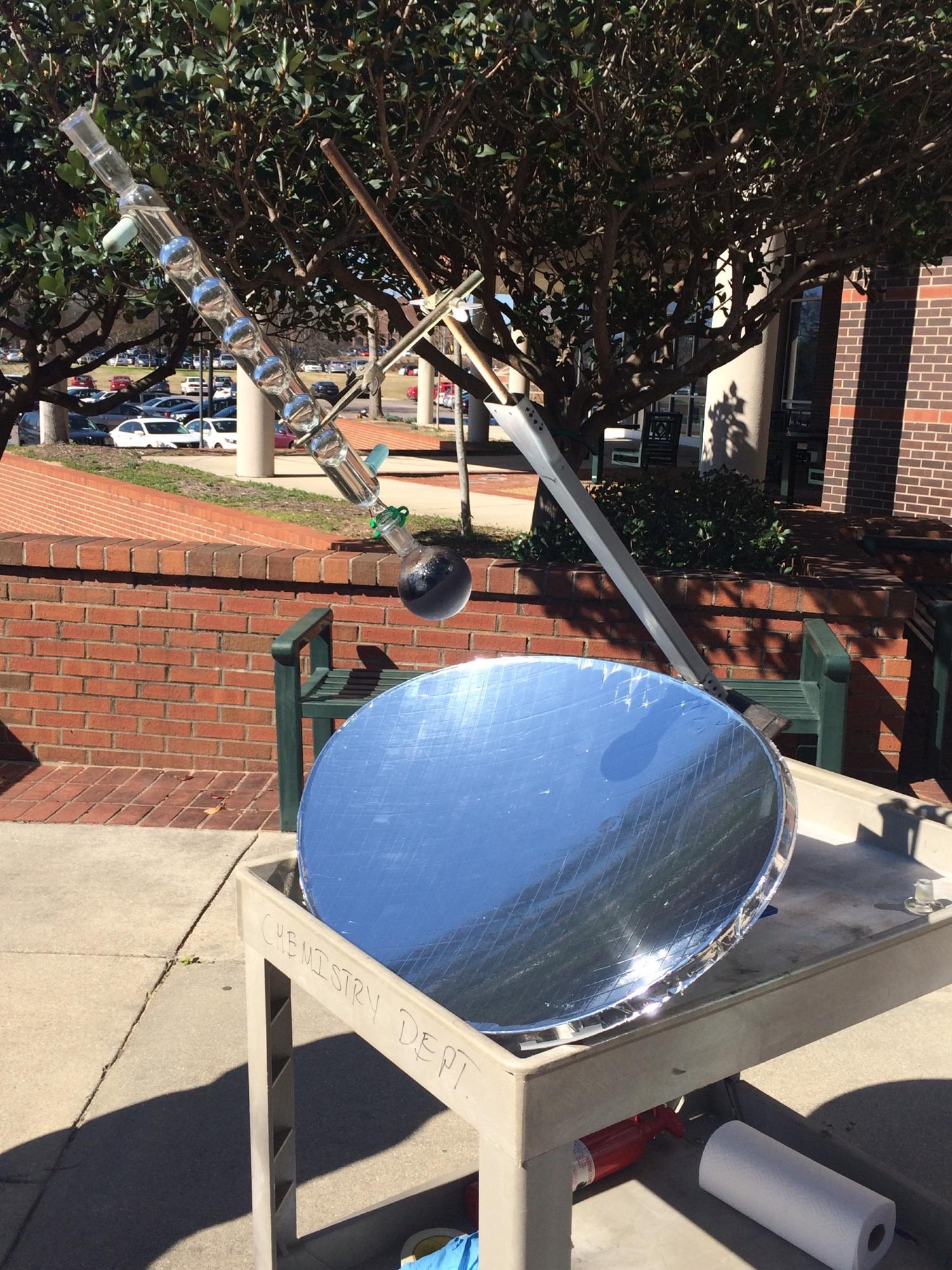Reviewed by Alex SmithAug 23 2021
A kind of nylon known as nylon 6-6 is used to make tire reinforcements, ski bindings, outdoor stadium seats and other products that need durability, strength and weather resistance.
 A solar reflector harnesses energy from the sun to heat a chemical reaction for making nylon 6-6. Image Credit: Brain Agee.
A solar reflector harnesses energy from the sun to heat a chemical reaction for making nylon 6-6. Image Credit: Brain Agee.
An eco-unfriendly process is required for producing this material, the initial step of which involves using the endangered element zinc as a catalyst. Researchers have currently come up with “greener” methods for this step that make use of alternative metals. They can also act as a substitute for waste iron in the form of rust, or ferric oxide, for the endangered element.
According to estimates from the ACS Green Chemistry Institute, zinc is only 50 to 100 years away from being extinct. And currently, manufacturers use zinc as the reducing agent and catalyst for making cyclohexene from trans-1,2-dibromocyclohexane, which is the first step in the five-step synthesis of nylon 6-6.
Amina Aly, Undergraduate Student of Cell and Molecular Biology, Atomic Energy Authority
Aly presented the work at a meeting of the American Chemical Society.
The study results will be presented by the researchers at the fall meeting of the American Chemical Society (ACS). ACS Fall 2021 is a hybrid meeting being conducted virtually and in person from August 22nd to 26th, 2021, and on-demand content will be available from August 30th to September 30th, 2021. The meeting features over 7,000 presentations on an extensive range of science topics.
“Nylon” is a general term used for a family of synthetic polymers, known as polyamides, made of repeating units. Various kinds of nylons, like nylon 6 and nylon 6-6, make use of various building blocks and thus exhibit special properties.
Nylon 6-6 is called so because it is made up of two molecules, each consisting of six carbon atoms, connected to each other as the repeating unit.
While looking for a substitute for zinc, Aly, who works in the laboratory of Brian Agee, PhD, at Augusta University, considered other closer metals in the periodic table that exhibited similar chemical properties. The other criteria were that the metals must be more abundant compared to zinc and safe to use.
The researchers selected aluminum, cobalt, copper, nickel and iron as possible catalysts for their study to manufacture cyclohexene. They also intended to determine greener methods that would help save water and energy, while making use of chemicals that are less harsh.
Therefore, the researchers integrated a solar reflective dish rather than an electric hot plate and a water-saving condenser instead of a regular condenser. Furthermore, they exchanged propylene glycol for the more dangerous ethylene glycol as the heat-transfer agent in the water-saving condenser, which helps cool the reaction without requiring a constant flow of cold water like regular condensers.
Aly discovered that iron was the best catalyst tested until now, with slightly lower yields compared to zinc.
“We also found that solar energy really is the way to go when it comes to this synthesis because the sun is a lot stronger than any hot plate you’re going to find, and a lot faster,” stated Aly.
Just 30 minutes was enough to perform the synthesis externally with a solar reflector, compared to 3 to 4 hours in the laboratory using a hot plate. Furthermore, the researchers discovered that by increasing the time of reflux –– heating the reaction for a particular time and utilizing a condenser to continuously cool the produced vapors to transform them back into liquid form –– from 15 to 30 minutes considerably increased the production.
Since we’re using the radiant energy of the sun, we’re not wasting electricity with extra heating.
Brian Agee, PhD, Augusta University
According to the researchers, their methods can be scaled up easily for manufacturing industrial nylon 6-6. Iron is an abundant metal, but Aly and Agee intend to try catalyzing the reaction using an even more eco-friendly iron waste product that can be found anywhere where metal is left outside to get wet: rust or ferric oxide.
If ferric oxide purchased from a chemical company works for the reaction, I’m seriously considering going to my parents’ place and scraping a little rust off their barn to try. Because as a green chemist, what better source for a catalyst than something you can get anywhere?
Brian Agee, PhD, Augusta University
The scientists acknowledge the assistance and financial support from Augusta University.